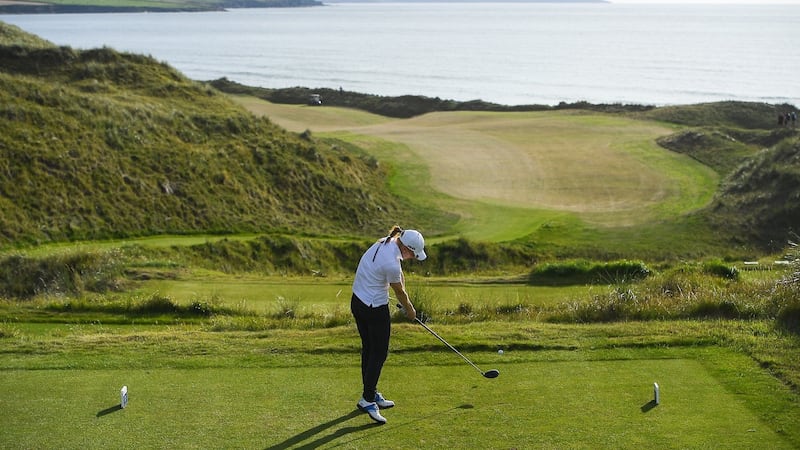With no international visitors to speak of, last year and much of this year presents the perfect opportunity for Irish golfers to play some of the best links courses in the country during the summer months when they would usually be all booked up.
As hotels and guesthouses reopen on June 2nd, the premier courses around the coastline are hoping for a boost in domestic visitors on special rates which golfers can avail of by ringing the club.
Fáilte Ireland estimates that 200,000 tourists visit Ireland each year to play golf, contributing more than €270 million to the economy annually and spending typically €250 per round at the likes of Ballybunion, Waterville, Tralee, Lahinch, Portmarnock and elsewhere.
However, last year and much of this year – even with hopes that international travel could return by late summer – has seen that market wiped out and bookings which are often made a year in advance pushed back into 2022.
American visitors
The recent news that Aer Lingus will permanently close its cabin crew base at Shannon Airport raises fears that the airline may cut back on transatlantic flights into the Clare airport which is a lifeline for the premier courses on Ireland’s west coast.
For American visitors in particular, Ballybunion is one of the most popular destinations with the Kerry course generally fully booked up a year in advance between April and September. Between the Old Course and the Cashen Course, there would usually be 16,000 rounds a year played by overseas visitors at Ballybunion.
Last year, the number of visitor rounds fell to 2,200, all of which were played by domestic golfers at reduced rates.

The club made a financial loss in 2020 as expected, but overall the picture doesn’t look too bleak, according to general manager John Eggleston, especially with vaccination rates increasing dramatically and restrictions set to fall away as the summer goes on.
“We did the Irish business we expected to do, which came to about €400,000 for the year in green fee business as opposed to our projected budget of €2.8 million in 2019,” Eggleston says.
“That obviously led to a deficit for the club for the year but that was tempered by the Government subsidies and the various cutbacks on expenditure. So our operational loss for the year was €440,000 before depreciation so in the scheme of things for Ballybunion Golf Club it wasn’t that bad. We’re targeting this year, even in the absence of any overseas green fees, a break-even position. With Government subsidies and the Bórd Failte grant of about €200,000 that we hope to get, we hope to achieve that.
Chicken-and-egg scenario
“Not to sound like the Taoiseach talking about a ‘meaningful Christmas’ but as long as we have a meaningful Irish season we should generate enough revenue to break even. But it’s a chicken-and-egg scenario. If international travel doesn’t resume and if there isn’t normality in the country then all the wage subsidies and all those things will likely continue for longer. But if things open up quicker and get back to normality then they’ll be withdrawn but we’ll have extra revenue. So either way we are still confident, under any scenario, of an operating surplus.”
The positive, not just for golf courses but for the tourism industry in general, is that the country is set to welcome international visitors again from July 19th, subject to proof of vaccination or a negative PCR test.
At Ballybunion, the reservations book is still quite full for August and, in particular, September, with the club planning to extend domestic special offers until the middle of August at which stage it hopes it will have overseas visitors back on the fairways.
With plenty of bookings already rolled into next year, the optimistic outlook is that 2022 will be as busy as ever and that the demand will continue into 2023 and beyond, particularly given that the tourism industry expects luxury travel to significantly increase over the next couple of years as people take that once-in-a-lifetime trip.












